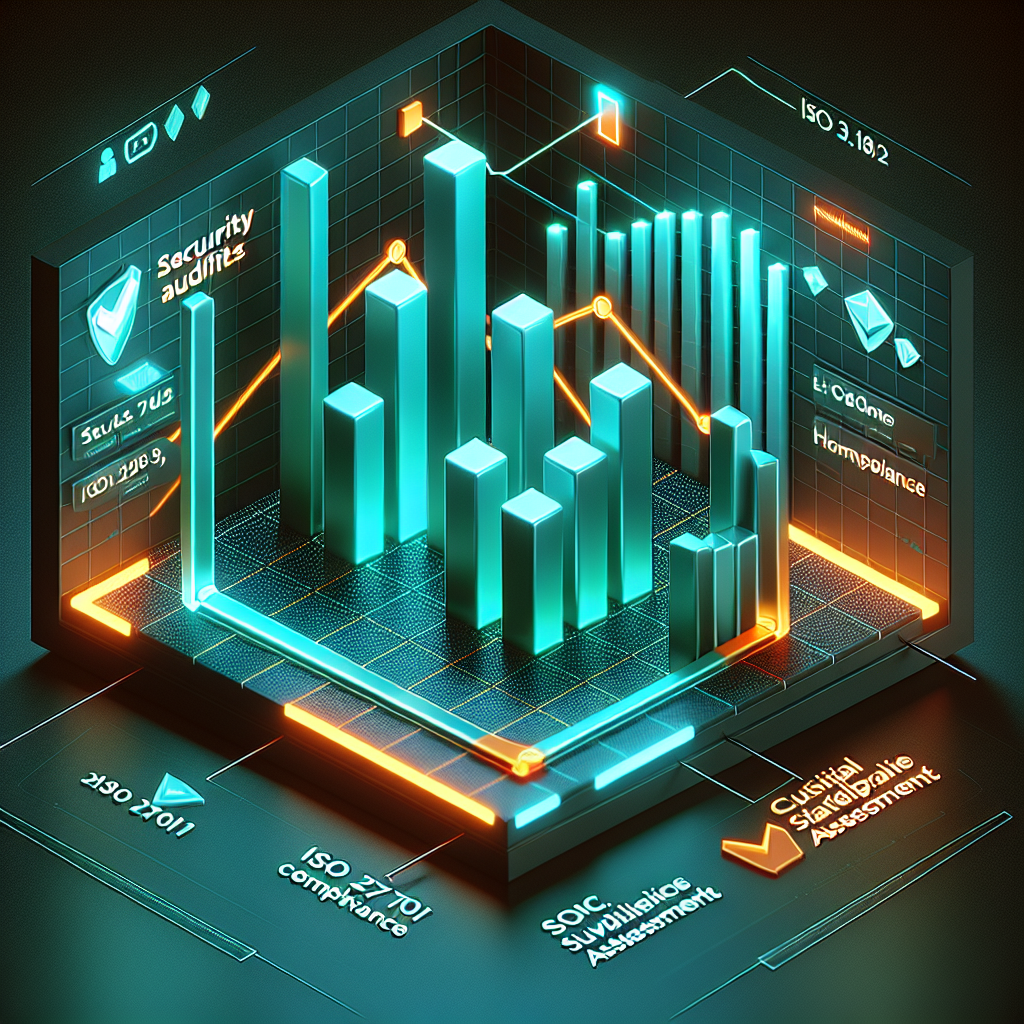Cryptocurrency Exchange Security Audits: ISO 27001, SOC 2 Compliance, and Custodial Safeguard Assessment

Introduction: A New Standard of Trust for Digital Assets
Cryptocurrency exchanges process billions of dollars in value every day, acting as the gateway between traditional finance and the decentralized economy. Yet high-profile hacks and regulatory crackdowns have made one fact clear: without verifiable security controls, users and institutions will not entrust their coins, tokens, or fiat on-ramps to any platform. Security audits anchored in globally recognized standards—ISO 27001, SOC 2, and specialized custodial safeguard assessments—have therefore become the gold standard for demonstrating operational resilience and winning customer confidence.
Why Security Audits Matter to Crypto Exchanges
Attack surfaces for exchanges are uniquely extensive. They include hot-wallet infrastructure, web and mobile front ends, matching engines, fiat payment rails, and a 24/7 customer-support back office. A single misconfigured firewall rule or leaked API key can translate into millions in lost assets and reputational damage that never truly heals. Third-party audits serve two core purposes: they validate that controls are designed and operating effectively, and they provide an objective report investors, regulators, and insurance underwriters can rely on.
The High-Value Target Landscape
Unlike traditional e-commerce or SaaS businesses where customer data is the main prize, exchanges store portable, censorship-resistant assets that can be laundered in minutes. Threat actors range from lone hackers using phishing kits to state-sponsored groups leveraging zero-day exploits. Demonstrating compliance with robust standards places a high barrier in front of adversaries and signals to the market that the organization will not be the weakest link.
ISO 27001: Building an Information Security Management System
ISO 27001 is the international benchmark for creating, implementing, and continuously improving an Information Security Management System (ISMS). It requires senior management commitment, formal risk assessments, documented policies, and a relentless cycle of Plan-Do-Check-Act. For crypto exchanges whose product iterations move at breakneck speed, ISO 27001 instills discipline by tying every new microservice or wallet deployment back to risk registers and approval workflows.
Key Controls Auditors Evaluate
Auditors review Annex A controls such as access control (A.9), cryptography (A.10), physical security (A.11), and operations security (A.12). For an exchange, special scrutiny falls on secure key management, incident response runbooks, and supplier relationships—particularly cloud providers and liquidity partners. Evidence ranges from HSM configuration screenshots to penetration-testing reports and employee security-awareness records.
Certification Timeline and Practical Tips
An average mid-size platform can complete Stage 1 and Stage 2 audits in six to nine months. To accelerate, appoint an internal ISMS champion, map existing policies to Annex A early, and automate evidence collection with ticketing integrations. Post-certification, surveillance audits occur annually, so treat ISO 27001 as an everyday operating model rather than a one-off project.
SOC 2 Type I and II: Trust Service Criteria for Ongoing Assurance
While ISO 27001 focuses on process maturity, SOC 2—governed by the American Institute of CPAs—centers on five Trust Service Criteria: Security, Availability, Processing Integrity, Confidentiality, and Privacy. A Type I report judges whether controls are suitably designed at a point in time; Type II tests effectiveness over a monitoring period (commonly six to twelve months). For U.S. institutional investors, a current SOC 2 Type II report is often a non-negotiable onboarding requirement.
Mapping SOC 2 to Exchange Operations
To meet the Security criterion, exchanges must showcase multi-factor authentication for all privileged accounts, vulnerability management SLAs, and documented log-review procedures. Availability ties into architectural redundancy for matching engines and wallet clusters. Processing Integrity is assessed via transaction reconciliation jobs, comparing blockchain balances with internal ledgers. Confidentiality controls revolve around encryption in transit and at rest, while Privacy overlaps with GDPR obligations for personal data.
Custodial Safeguard Assessment: Proving Your Assets Are Safe
Traditional frameworks do not fully cover blockchain-native risks such as multisignature coordination, chain forks, or smart-contract upgradeability. A Custodial Safeguard Assessment (CSA) fills this gap by delving into key-generation ceremonies, cold storage temperature logs, hardware enclave provenance, and withdrawal approval quorum rules. Although no single governing body exists yet, leading exchanges commission big-four or boutique crypto-security firms to issue attestations aligned with industry working groups like CCSS (CryptoCurrency Security Standard).
Cold Storage, Multi-Party Computation, and Asset Segregation
Auditors validate that private keys are generated in air-gapped environments, sealed with tamper-evident bags, and sharded using multi-party computation (MPC) so that no individual ever holds full control. They also confirm that customer assets remain segregated from treasury holdings through distinct derivation paths or separate vaults, enabling provable solvency snapshots without exposing sensitive key material.
Integrating All Three Frameworks in a Unified Audit Strategy
Pursuing ISO 27001, SOC 2, and a CSA in parallel may sound daunting, but a control-mapping matrix reveals 60–70% overlap. For example, vulnerability management satisfies ISO 27001 Annex A 12.6, SOC 2 Security, and CSA operational security domains simultaneously. By adopting a single source of truth—often a GRC (Governance, Risk, and Compliance) platform—teams can automate evidence reuse, schedule recurring control tests, and track remediation deadlines across frameworks.
Choosing the Right Audit Partner
Look for firms with both deep crypto expertise and recognized accreditations. Ask potential auditors for redacted reports demonstrating prior exchange engagements, inquire about their cryptography bench strength, and confirm they are approved by national accreditation bodies or licensed CPAs where applicable. Fees can range from $50,000 for a targeted CSA to $300,000 for combined SOC 2 and ISO 27001 certifications, so budget accordingly in your roadmap.
Final Thoughts: Turning Compliance into Competitive Advantage
Security audits are not mere checkboxes; they are strategic investments that unlock new markets, reduce cyber-insurance premiums, and fortify customer loyalty. As the regulatory environment tightens and institutional volumes grow, exchanges that proactively secure ISO 27001 certification, maintain an unqualified SOC 2 Type II report, and publish an independent Custodial Safeguard Assessment will stand out from a crowded field. In an industry built on transparency and trustless technology, demonstrating that you can, in fact, be trusted is the ultimate differentiator.